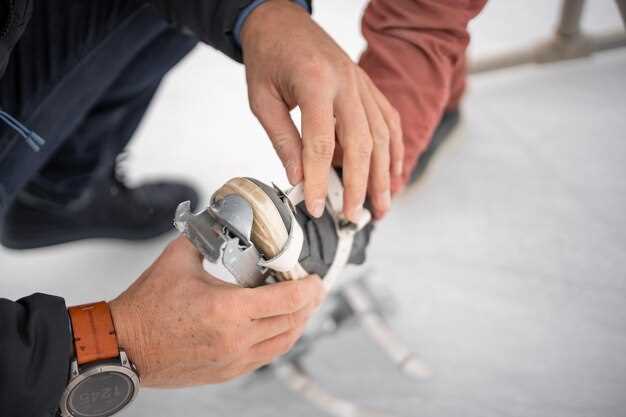
Maintaining your vessel’s health is crucial for safe and enjoyable marine adventures. One of the key components of your boat’s maintenance is ensuring that the bilge pump is functioning properly. The bilge pump is designed to remove excess water that accumulates in the bilge area, protecting your boat from potential flooding and damage. Understanding how to replace this essential part can save you time and money, while also enhancing your confidence on the water.
Replacing a bilge pump may seem daunting to beginners, but with the right knowledge and tools, it can be a straightforward task. In this guide, we will break down the process into manageable steps, providing you with the information needed to understand the various parts involved and how to execute the replacement safely and effectively. From selecting the correct pump size to handling electrical connections, we’ll cover everything you need to know to tackle this essential marine maintenance task.
By learning to replace a bilge pump, you not only equip yourself with valuable skills but also enhance the safety and longevity of your boat. Whether you’re a novice boater or looking to refresh your maritime maintenance skills, this guide will empower you to take control of your vessel’s upkeep and ensure peace of mind on the open water.
Choosing the Right Bilge Pump for Your Vessel

Selecting the appropriate bilge pump is crucial for maintaining the safety and integrity of your vessel. The right pump ensures efficient water removal, protecting your boat from flooding and potential damage. When choosing a bilge pump, consider its capacity, design, and the specific needs of your boat.
The capacity of a bilge pump is typically measured in gallons per hour (GPH). For small vessels, a pump with a GPH rating between 500 to 1,200 is generally sufficient. Larger boats may require higher capacity pumps, upwards of 3,000 GPH. Assess the size and type of your vessel to determine the required capacity for effective operation.
There are different types of bilge pumps, including diaphragm and centrifugal pumps. Diaphragm pumps are preferable for larger debris and tend to be more reliable, while centrifugal pumps are effective for clear water but can be less efficient when handling debris. Analyze the conditions your pump will face and choose a design that suits your vessel’s environment.
Also, consider the parts and accessories associated with the bilge pump. This includes hose size, check valves, and float switches. Ensure that the hoses are the correct diameter to maximize flow rates, and select durable materials that can withstand marine conditions. A reliable float switch will activate the pump automatically, providing peace of mind when you’re away from your vessel.
Finally, understand the power source for your bilge pump. Most boats operate on 12-volt or 24-volt systems. Verify compatibility with your vessel’s electrical system to avoid potential issues. Regular maintenance and testing of the pump and its components will ensure longevity and reliable performance, safeguarding your vessel against water intrusion.
Step-by-Step Guide to Removing the Old Bilge Pump

Before starting the removal process, ensure that you have all necessary tools ready, including a screwdriver, pliers, and a bucket to catch any residual water. Safety precautions, such as wearing gloves and eye protection, are also recommended.
1. Turn Off Power: Locate the power switch for the bilge pump and turn it off. This step is crucial to avoid any electrical hazards while working.
2. Remove the Hose: Identify the hose connected to the bilge pump. Using pliers, loosen the hose clamp and detach the hose from the pump outlet. Be prepared for some water spillage, so position the bucket underneath to catch any excess water.
3. Disconnect Wiring: Carefully follow the wires leading to the pump. Disconnect the electrical connectors by gently pulling them apart. Take note of where each wire connects, as you will need this information when installing the new pump.
4. Unscrew the Pump: Locate the screws or bolts that secure the bilge pump to its mounting surface. Using a screwdriver or socket wrench, remove these fasteners. Be sure to hold the pump securely while doing this to prevent it from falling.
5. Remove the Pump: Once unscrewed, gently lift the pump out of its housing. Check for any attached parts or debris that might require cleaning from the bilge area.
6. Clean the Area: After the pump is removed, take a moment to clean the area where the pump was mounted. This ensures a smooth installation for the new bilge pump and prevents any buildup of debris or old parts.
7. Inspect the Installation Site: Examine the mounting location for any signs of damage or corrosion. Address any issues before proceeding with the new pump installation.
By following these steps, you can effectively remove the old bilge pump and prepare for the installation of a new one, ensuring that your bilge system operates efficiently.
Proper Installation Techniques for a New Bilge Pump
Installing a new bilge pump correctly is crucial for effective marine safety and performance. Begin by selecting the right bilge pump suited for your vessel’s size and type. Ensure the pump’s capacity is sufficient to handle the water volume expected in the bilge area.
Before installation, gather all necessary tools and parts, including hoses, fittings, and mounting hardware. Begin by checking the bilge area for any debris that may obstruct the pump’s function. A clean and clear workspace helps facilitate proper installation.
Next, securely mount the bilge pump in a flat, stable position in the bilge. Using screws or bolts, ensure it is anchored properly to avoid movement during operation. Position the pump so that the intake is as low as possible without being submerged, which allows it to effectively remove water from the bilge.
Connect the discharge hose to the pump outlet, ensuring a snug fit to prevent leaks. If your marine environment allows, route the hose to a discharge location above the waterline. This will improve the efficiency of water expulsion and minimize backflow risks. Use appropriate clamps to secure connections and check for any possible kinks, as these can reduce pump efficiency.
Finally, connect the electrical wiring of the bilge pump. Ensure that all electrical connections are watertight and secured using marine-grade components to prevent corrosion. Double-check all connections before powering the pump on. After installation, test the bilge pump to confirm it operates correctly and efficiently handles water removal.
